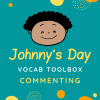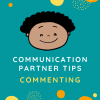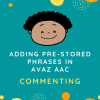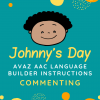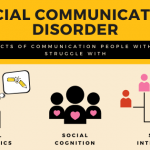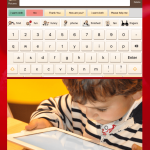Building Language for All Communicative Functions
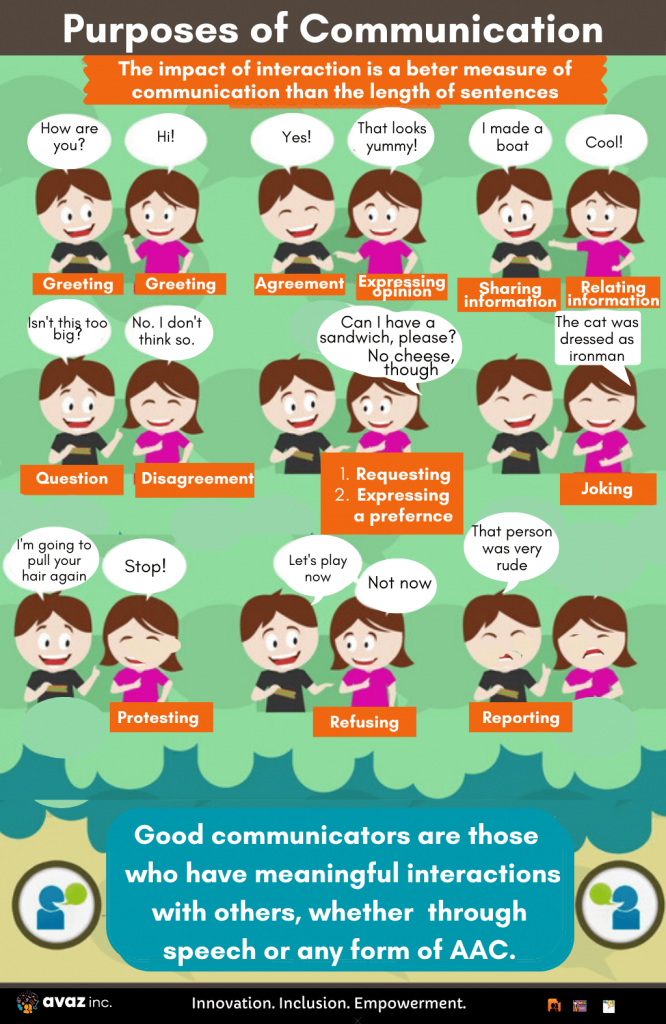 There are several reasons we communicate. Sometimes, we communicate just to get the attention of a loved one while other times we have profound things to say or a strong point to make. Communication, therefore, is the bedrock of human relationships and social interactions. In addition to fostering bonds, it also allows us to stand up for ourselves, stand for things we believe in, and thus is an important tool for self-advocacy. So, we must ensure that AAC users acquire the necessary skills for the entire range of communicative functions.
There are several reasons we communicate. Sometimes, we communicate just to get the attention of a loved one while other times we have profound things to say or a strong point to make. Communication, therefore, is the bedrock of human relationships and social interactions. In addition to fostering bonds, it also allows us to stand up for ourselves, stand for things we believe in, and thus is an important tool for self-advocacy. So, we must ensure that AAC users acquire the necessary skills for the entire range of communicative functions.
List of communicative functions
From expressing our feelings to giving or getting information, communication serves several purposes in our daily lives. Language instruction for AAC users must focus on expanding their communicative functions so that their expression is not limited. When some communicators do not know the appropriate means to communicate, they may resort to challenging behaviours to convey their emotions, needs, and wants. The key is to give them relevant vocabulary in their AAC systems and create consistent communication opportunities for the various communicative functions.
Here are some of the purposes of communication.
- Requesting
- Greeting
- Refusing/Rejecting
- Commenting
- Protesting
- Asking Questions
- Sharing Information
Let's see how we can support a communicator with these communicative functions:
Requesting
This is probably one of the most important skills for an emergent communicator to pick up because this helps them to get what they want.
Strategies:
- Identify motivators for communication. It could be the communicator’s favourite activity, toy, or food item. It’s easier to work on requests when there is a clear motivation present.
- Create an environment replete with activities and items that are communication motivators.
- Put their favourite snack in clear containers so that the communicator would request for help. Give food in a bowl without utensils. Keep their favourite blanket or hide one shoe when they are ready to go out. Make sure that the child does not get frustrated while sabotaging the environment to elicit requests.
- Acknowledge all request attempts and prompt if the communicator is unable to make an independent request.
- Their desired toy/activity acts as a natural reinforcer but a praise can only add to their excitement.
Vocabulary:
Want, Need, More, This, That, Now, Give, Eat, Hungry, Play are some words that the communicator can use along with fringe vocabulary such as toy, cookie, TV, etc.
Refusing/Rejecting
Since children with complex communication needs may be vulnerable, it’s important to ensure that they are raised with an awareness of their likes and dislikes. It’s also equally important to teach them the power of words and how they can use it to implement their right to refuse and reject.
Strategies:
- Identify activities or moments that the communicator is not excited about. This might involve a bit of guesswork. If you notice any challenging behaviours, try and see the antecedent which might give you a clue.
- Try to engage the kid in the activity and model ‘No’ or ‘don’t like’ on the communicator’s AAC system. For example, if the child seems to be not too interested in reading, model ‘I don’t want it’ . Say, “Oh, you’re saying you don’t want it. OK” and close the book.
- Make sure you are able to acknowledge their refusal while modelling the vocabulary. In case you are unable to accommodate their requests, try and negotiate as much as possible so that they feel heard.
- When they pick an item they like, help them see how they rejected others to choose their favourite item.
“Oh.. you want cookies? You don’t want cake”
Vocabulary:
stop, don’t, no, not, now, later, go, break
Commenting
This can be a complex communicative function to teach for emergent communicators. But commenting is a great skill to acquire because it helps communicators initiate and engage in meaningful conversations.
Strategies:
1.Model commenting by making a lot of comments during shared reading or watching TV together.
“This is very funny”
“The girl’s hat looks cool”
2. Give visual prompts such as commenting cards and sentence strips
3. Ask wh questions using visual prompts. Remember that verbal prompts may be useful but difficult to fade.
“What do you see”
“Where is the hare?”
4.Use play time and sensory toys to make tons of comments. Give them the slime, the play doh, and scarf and encourage them to tell you how the item feels.
Model the vocabulary on their AAC system consistently and prompt until they can utter it independently.
Vocabulary:
see, feel, taste, along with descriptive words
Communicative Functions with Reading
Shared reading can be a great way to teach communicative functions to AAC users. As you read text, draw the communicator's attention to the different things and encourage them to make comments. We have put together a LanguageLearning Bundle with a story to encourage commenting in emergent communicators.
How to Use the Bundle:
Read Language Builder Instructions PDF given below for details on how to use this bundle. Click on the below icons to download the individual PDFs
Subscribe to the Avaz Newsletter
Join 4000+ fellow readers! Get latest articles straight to your inbox. Enter your email address below:
Popular Articles
- Building Literacy: Teaching Grammar to AAC Users
- Expansion of Language: Supporting AAC Learner’s Progress
- Avaz User Stories and Videos
- Avaz Joyful Reading: Resources for Shared Reading
- AAC Resources: Games, Activities and Communication Opportunities
- Avaz AAC User Stories: Why Nishant and his AAC System are Inseparable
- Downloadable Low Tech Communication Boards
- Get the Better of Reading Difficulties with MDA Avaz Reader
- AAC Apps for Adults with Acquired Communication Disorders
- Teletherapy: A smart way to facilitate remote speech therapy for adults and children



